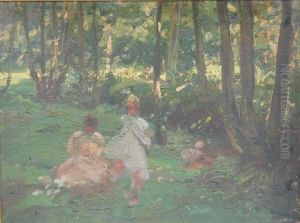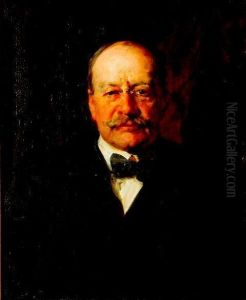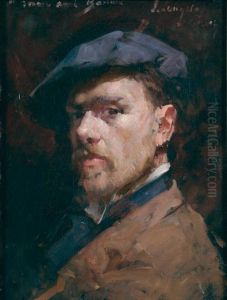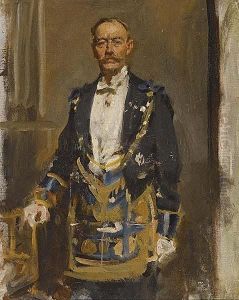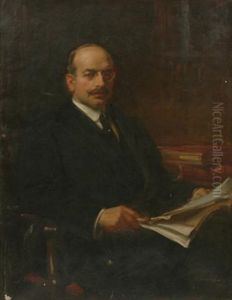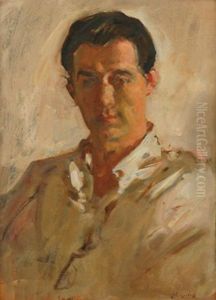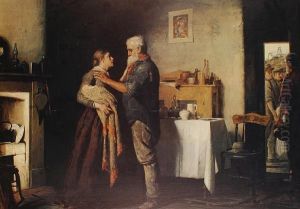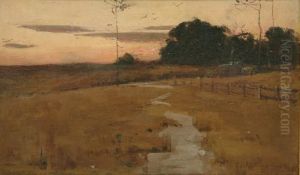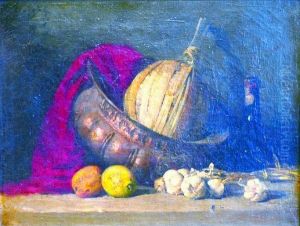John Campbell Longstaff Paintings
John Campbell Longstaff was an Australian artist, born in Clunes, Victoria, Australia on March 10, 1861. He is recognized for his contribution to Australian art, especially during the late 19th and early 20th centuries. Educated initially in Australia, Longstaff's talent and ambition led him to further his studies abroad. He moved to Paris to train at the prestigious Académie Julian under the tutelage of leading academic painters like Gustave Boulanger and Jules Lefebvre, which was typical for many Australian artists seeking to refine their skills with European masters at the time.
After his education in Paris, Longstaff returned to Australia where he quickly established himself as a significant figure in the Australian art scene. He became renowned for his portraits, landscapes, and historical paintings. His works were characterized by a strong naturalism, a skillful use of light, and a deep understanding of the human form. Longstaff won the coveted Archibald Prize five times; this prize is Australia's most prestigious award for portrait painting, which attests to his prowess in this genre.
Throughout his career, Longstaff was involved in various art societies and played a critical role in the development of art in Australia. His influence extended beyond his own works, as he was also a respected teacher and mentor to younger artists. His commitment to art was recognized by his peers and, in 1928, he was knighted for his services to art in Australia, becoming Sir John Longstaff.
Longstaff's legacy is preserved in his numerous works held in Australian galleries, including the National Gallery of Australia and the Art Gallery of New South Wales. His portraits of prominent Australians from various walks of life provide a valuable insight into the country's social history. John Campbell Longstaff passed away on October 1, 1941, in Melbourne, leaving behind a rich oeuvre that continues to be celebrated for its contribution to Australian art history.
